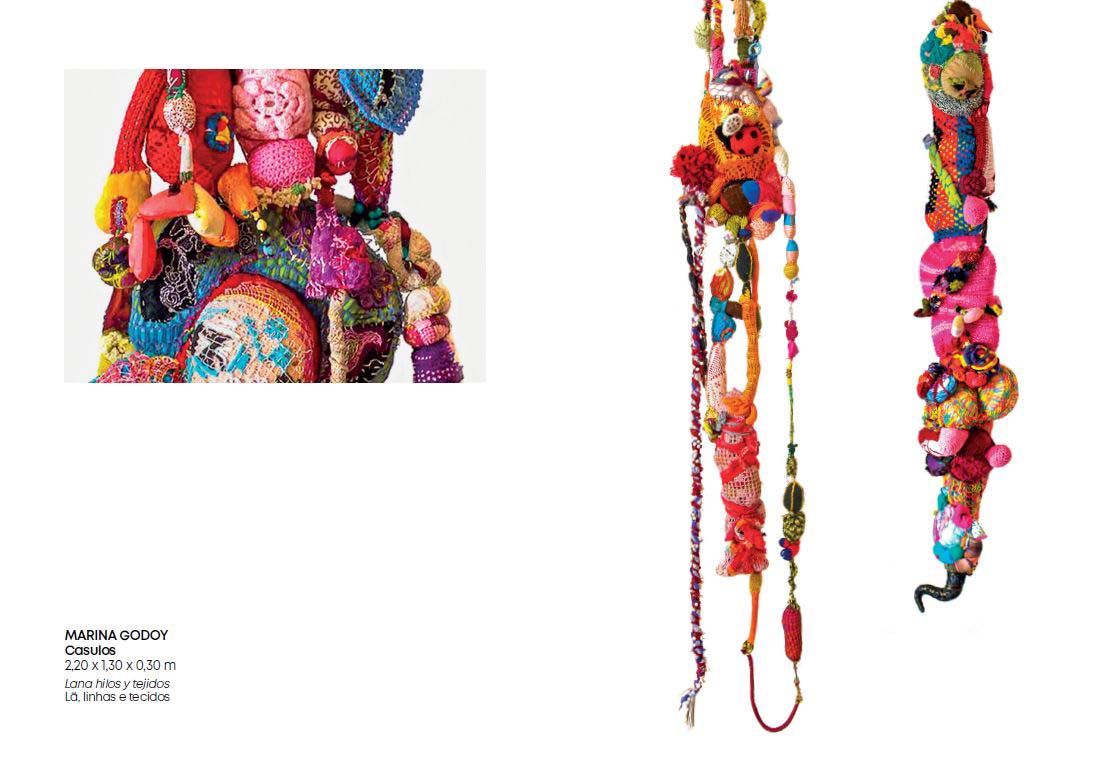The artists Eva Soban, Juan Ojea and Renata Meirelles, responsible for designing, concept and exhibition curator TraMares cut Brazilian Textile, to be held no Cultural Center – College Major; Brazil House in Madrid, Spain, a group of coordinate 21 Brazilian artists who exhibit their work, paths and poetic promoting cultural exchange of Textile Art, touting Brazil and its artistic potential.
The exhibition takes place in parallel to the VIII International Biennial of Contemporary Textile Art, this edition with the theme Ciudad Sostenible, promoted by WTA - World Textile Art. The event also hosts, more than six parallel shows, prizes, lectures and workshops; an immersion in the world of International Textile.
Brazil is one of the honored country in this issue and the exhibition aims to present an excerpt of the Brazilian Textile Contemporary Art. Paths through each artist expose the unfolding of creative energy each. These creative come from several Brazilian states, like São Paulo, Santa Catarina, Paraná, Rio Grande do Sul, Holy Spirit, among others and abroad, States, United, England, etc. The result set shows a plural. Diversity of used materials, as well as the techniques chosen in the creation of works, travels the more traditional use of new technologies.
as defined Marcela Stump, "Textile art is the art of creating with the fibers, natural or synthetic. Its origin dates back to history and came suffering developments in accordance with the development of techniques and devices. The Contemporary textile art It is a current art split, which also combines other manual techniques. From the twentieth century, various artists from around the world using textile techniques as an expression of their arts integration using tissue sculptures, facilities and other objects. Wool panels with frames, combinations of different types of fabrics and abstract compositions are among examples of contemporary textile art. In this mixture tissues, marking the segment is the mixed use of techniques. The artists of this school often composing his works with drawing, painting, Prints, plots and dyeing ".
In Brazil, the textile art segment stands out in the popular festivals, no Carnival, football stadiums, Indigenous art and most of the types present in Brazil. Important Brazilian artists, of all time, They expressed by textile material.
TraMares It aims to promote contact and cultural exchange of Textile Art, and disseminate their artistic potential as Brazil is a country that uses this technique widely, in its essence.
It is necessary to appreciate, increasingly, Initiatives like that of Eva Soban, Juan Ojea and Renata Meirelles, contributing to the promotion of Brazilian Textile, taking part in international events.
| SERVICE |
| Exhibition: “TraMares” |
| Artists: Adriana Banfi, Claudia,Claudia Day, each Hulse, Eva Soban, Giuliana Sommantico, Jacqueline Chiabay, Juan Ojea, Luciane Sell, Magy Imoberdorf Maria Carmen Linsingen, Maria Villares, Marina Godoy, Marta Meyer, Miriam Pappalardo, Patricia Tavares, Renata Meirelles, Rosana Morais, Samantha Ortiz, Veronica Filipak, Zoravia Bettiol |
| Opening: 19 September 2019, Thursday, to 19:30hs |
| Period: 20 September to 03 th November of 2019 |
| Address: Cultural Centre, College Major – Casa Brazil in Madrid |
| Av. De la memory, 3 – Ciudad Universitaria - Madrid, Spain |
| Phone: (11) 2737-1249 |
| Timetables: Tuesday to Friday, from 11 at 19h / Saturday, from 11 às 17h |
| Number of works: 21 |
| Technique: textile / various |
.
Sign up to receive Event News
and the Universe of Arts first!
About WTA – World Textile Art
The WTA was founded in 1997 by the artist Pilar Tobon, with the support of the Latin American Art Museum of Miami. In these 20 years he held seven major Biennials: United States, Venezuela, Costa Rica, Argentina, Mexico and Uruguay. has – A major cultural event, which includes the participation and support of great artists, curators and theorists 5 continents working opening the doors of museums and public spaces to this ancient art.
The last edition saw the participation of 360 artists 75 countries on five continents and a major international visitation of approximately 200.000 people.
During the Biennials, They are organized halls of various formats with conference, lectures and workshops that allow the encounter between artists and audiences everywhere, fostering research, creating, research and exchange of Textile Art.

